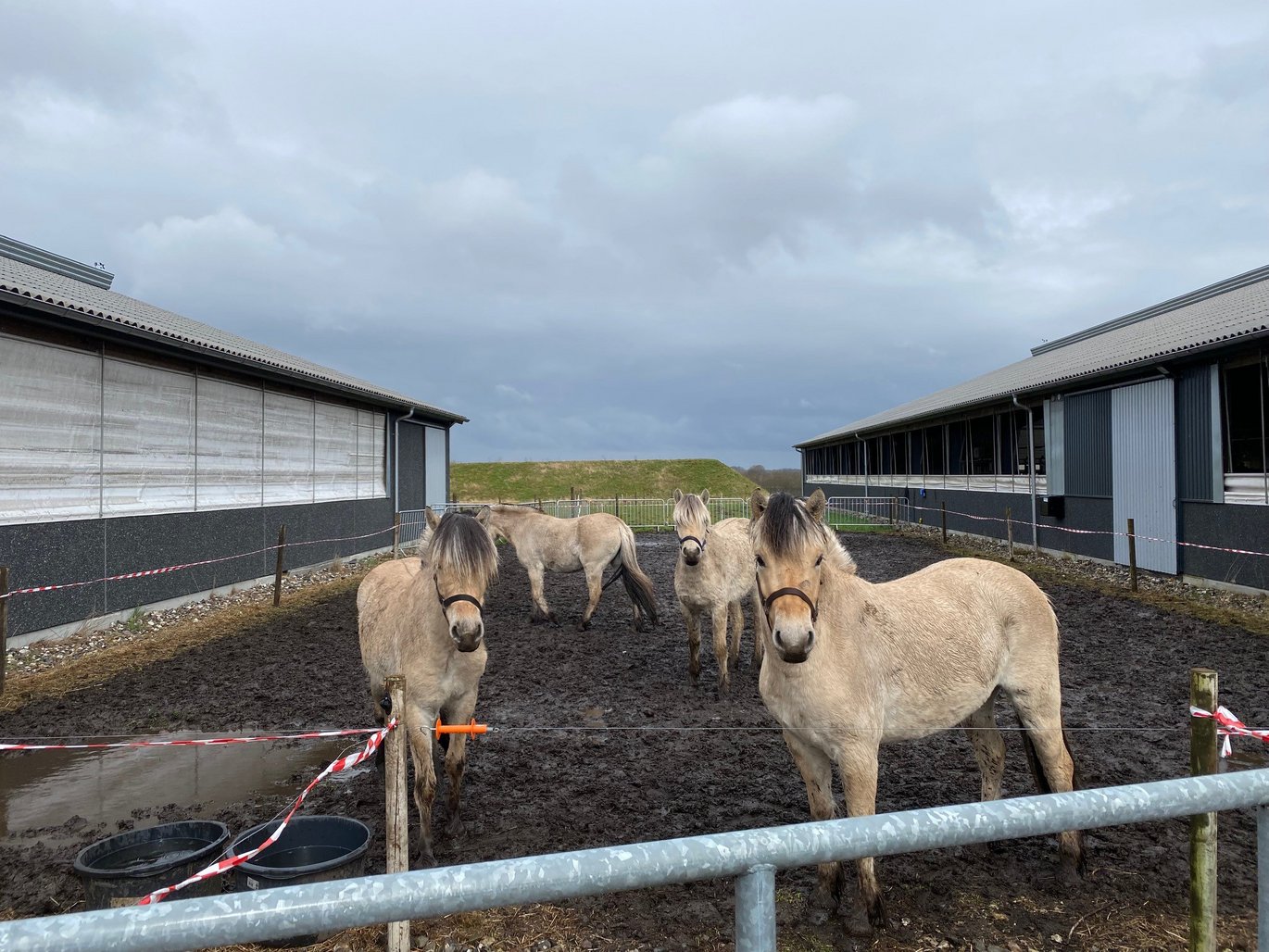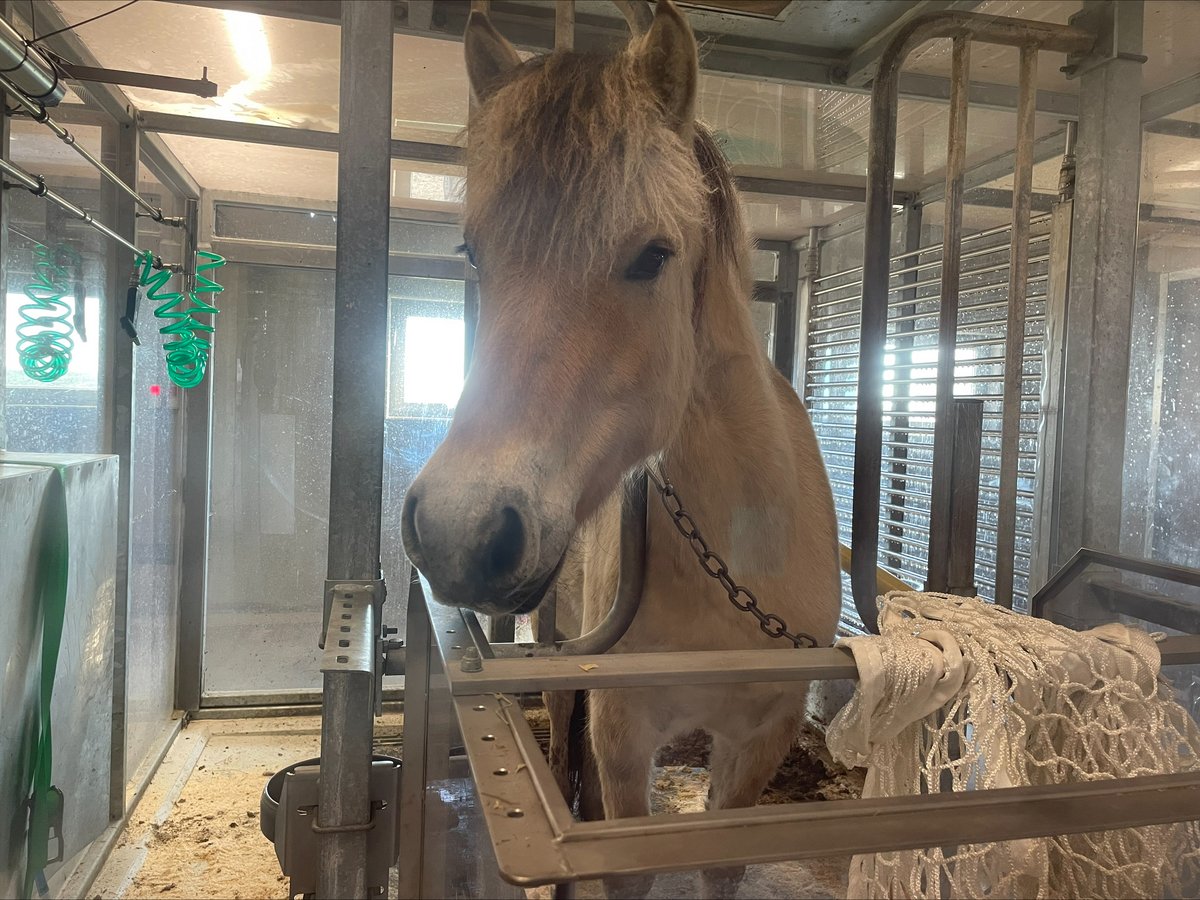Hestene har indtaget Danmarks Kvægforskningscenter (DKC)
Fire fjordheste har i en kortere periode befundet sig i en fold mellem staldbygningerne på Aarhus Universitets kvægforsøgsfaciliteter (DKC) ved AU Viborg – Forskningscenter Foulum. De indgår i et forsøg, der skal se nærmere på, hvor stor hestes metanproduktion egentlig er.

For the first time, there are other animals than cattle at Burrehøjvej 49 in Tjele, where AU's cattle experimental facilities are located. Here, four Fjord horses have temporarily moved in to help researchers learn more about how much methane a horse emits.
Anne Louise F. Hellwing from the Department of Animal and Veterinary Sciences (ANIVET) at Aarhus University is in charge of the experiment and according to her, we currently know very little about methane production in horses: "By far, most studies have been conducted on cattle, regarding animals’ emissions of methane. From these studies, we know that the composition and digestibility of the feed play a major role in relation to how much methane is formed in the digestive tract when the feed is digested," explains Anne Louise F. Hellwing – and continues: "Our experiment will hopefully reveal more about whether this also applies to horses".
Test of two types of feed rations
The experiment test two types of concentrate feed. All horses are fed 70% of their energy requirement from hay lag and the last 30% energy is either coming from dried beet pulp or steam rolled peas. The aim of the feeding experiment is to examine the methane production of the horses by feeding two different feed rations. The hay lag covers the horses’ need for roughage. The choice of feed supplement is based on data from an in-vitro experiment (laboratory experiment) carried out at the Norwegian University of Life Sciences (NMBU), where degradation and gas production from various feed materials have been tested.
The horses thrive in AU Viborg's experimental stable
Four young three-year-old Fjord horse mares are part of the experiment. All four horses have settled well in the experimental stable, and they have already been through the first of two rounds of experiments. Each round consists of 15 days of adaptation to the diet and three days of measurements in respiratory chambers, where the CO2 and CH4 emissions of the horses and the O2 uptake are measured.

Thorough adaptation to the experimental facilities
"We've been really curious about how the horses would behave when we put them into our respiratory chambers, but everything has gone so well," says Anne Louise. "We have deliberately chosen a calm horse breed for the experiment, and we have also focused a lot on training and getting them used to the chambers before the experiment started. In addition, there has been supervision several times a day while they have been in the chambers. And all four horses have been calm throughout the entire period." explains Anne Louise F. Hellwing.
With the results, which are expected to be ready before the end of the year, the researchers expect to have taken a step further in relation to gaining more knowledge about how horses can be fed more climate friendly.
Supplementary information | |
| We strive to ensure that all of our articles comply with Universities Denmark’s principles for good research communication. Therefore, we have supplemented the article with the following information: | |
Funding | Grant from Hesteafgiftsfonden |
Collaborators | Rasmus Bovbjerg Jensen, Norwegian University of Life Sciences. Jørgen Kold, Seges Innovation |
Learn more | Read previous coverage of the study: https://dca.au.dk/aktuelt/nyheder/vis/artikel/hvor-meget-metan-udleder-en-hest |
Contact | Anne Louise Frydendahl Hellwing e-mail: annelouise.hellwing@anis.au.dk |
